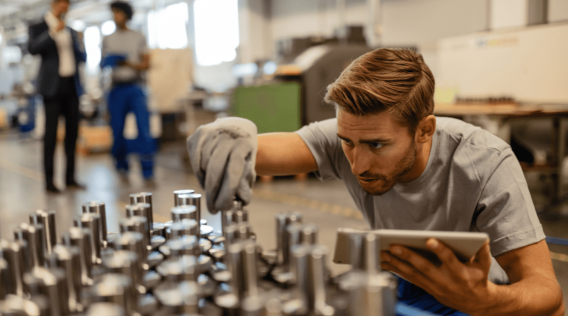In today’s fast-paced world, speed and efficiency are key to success in any business. This is particularly true in the product development industry where companies are racing to bring new products to the market before their competitors. One way to gain an edge in this highly competitive market is by using rapid prototyping services. In this article, we will discuss what rapid prototyping is and how it can benefit your product development needs.
What is Rapid Prototyping?
Rapid prototyping is a process used to quickly create a physical model or prototype of a product. This is done using 3D modeling software and a variety of manufacturing techniques, such as 3D printing, CNC machining, injection molding, and casting. Rapid prototyping allows designers and engineers to quickly create and test multiple iterations of a product design, without the need for expensive tooling or manufacturing processes.
Why Use Rapid Prototyping Services?
There are many benefits to using rapid prototyping services in product development. First and foremost, rapid prototyping allows designers and engineers to quickly iterate on a design, testing multiple versions of a product and making improvements on the fly. This can save a significant amount of time and money compared to traditional manufacturing methods, which require expensive tooling and longer lead times.
Rapid prototyping also allows for more creative freedom in the design process. With the ability to quickly create and test multiple versions of a product, designers can explore more creative options and push the boundaries of what is possible. This can lead to innovative and unique product designs that stand out in a crowded market.
In addition, rapid prototyping allows for faster and more accurate communication between design teams, clients, and stakeholders. Instead of relying on 2D drawings or computer simulations to convey a design idea, a physical prototype can be created and shown to all parties involved. This can help avoid misunderstandings or miscommunications and ensure that everyone is on the same page.
Types of Rapid Prototyping Services
There are several types of rapid prototyping services available, depending on the specific needs of a project. Some of the most common types include:
1. 3D Printing: This is a popular method for creating physical models of a product using a variety of materials, such as plastics, metals, and ceramics.
2. CNC Machining: This method uses computer-controlled tools to create precise parts from a variety of materials, such as metals, plastics, and wood.
3. Injection Molding: This is a manufacturing process used to create large numbers of identical parts by injecting molten material into a mold.
4. Casting: This involves pouring a liquid material, such as metal or resin, into a mold to create a solid object.

Choosing the Right Rapid Prototyping Service
When choosing a rapid prototyping service, it’s important to consider several factors, such as the materials available, the cost, and the lead time. It’s also important to choose a service provider with experience and expertise in your specific industry or product type.
Conclusion
Rapid prototyping services offer a fast, efficient, and cost-effective solution for product development needs. Whether you’re designing a new consumer product, medical device, or industrial equipment, rapid prototyping can help you quickly create and test multiple versions of your product design, saving time and money in the process. With the many benefits of rapid prototyping, it’s no wonder that it has become an essential tool for product development in today’s fast-paced business world.
-

- Magnesium thixomolding parts laptop housing cover B
-

- OEM Die casting manufacturer produce magnesium alloy wheel for kids push bike
-

- Thixomolding parts & components mobile phone middle board processed
-

- OEM die-casted parts& components
-

- Magnesium alloy die-casting parts&components for e-bike
-

- Popular Children’s Sports Bicycle High Quality Children’s Balance Bike Children’s Bicycle

 0086-750-5616188
0086-750-5616188 +86 13392089688
+86 13392089688 sales@zhongmei-tech.com
sales@zhongmei-tech.com







